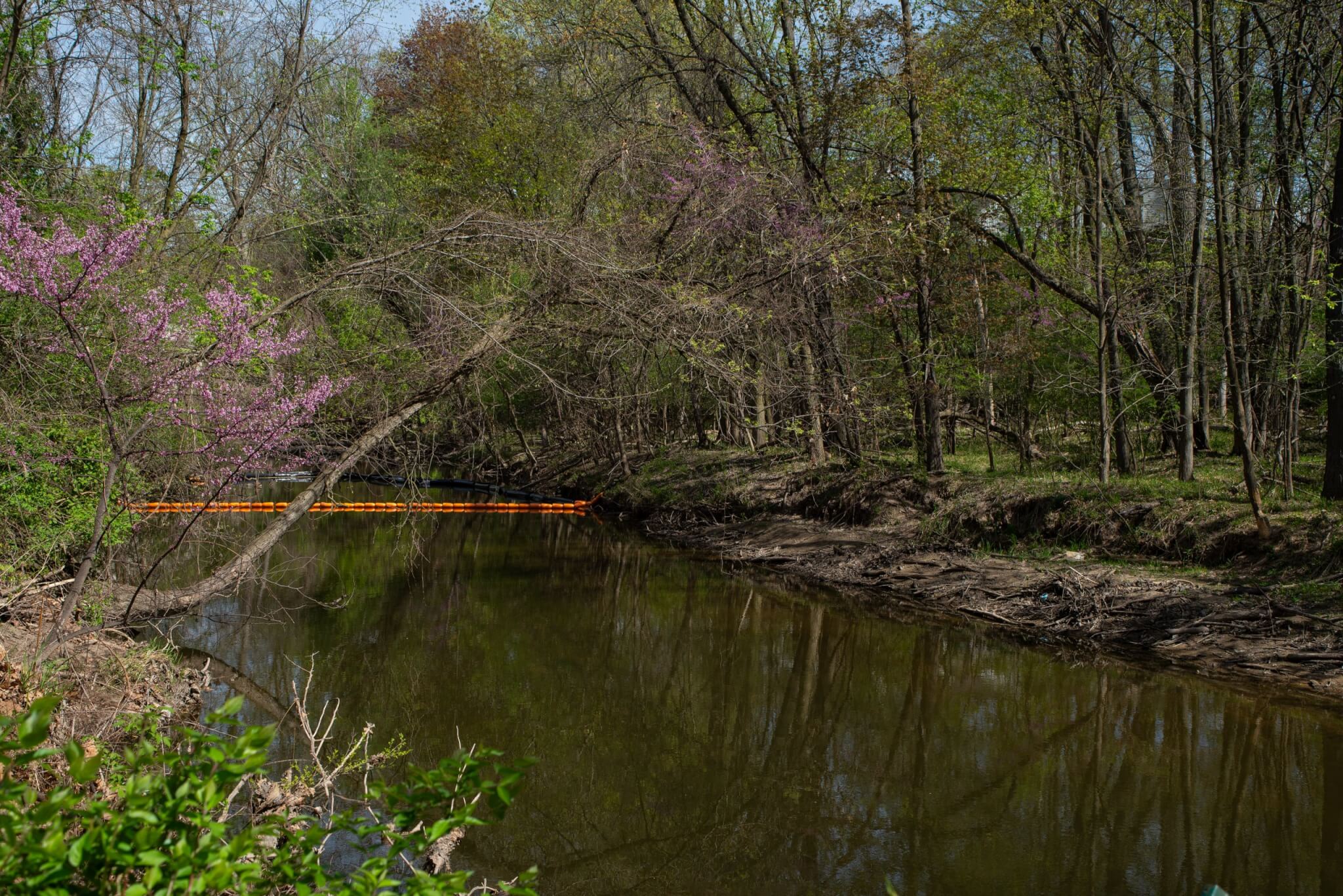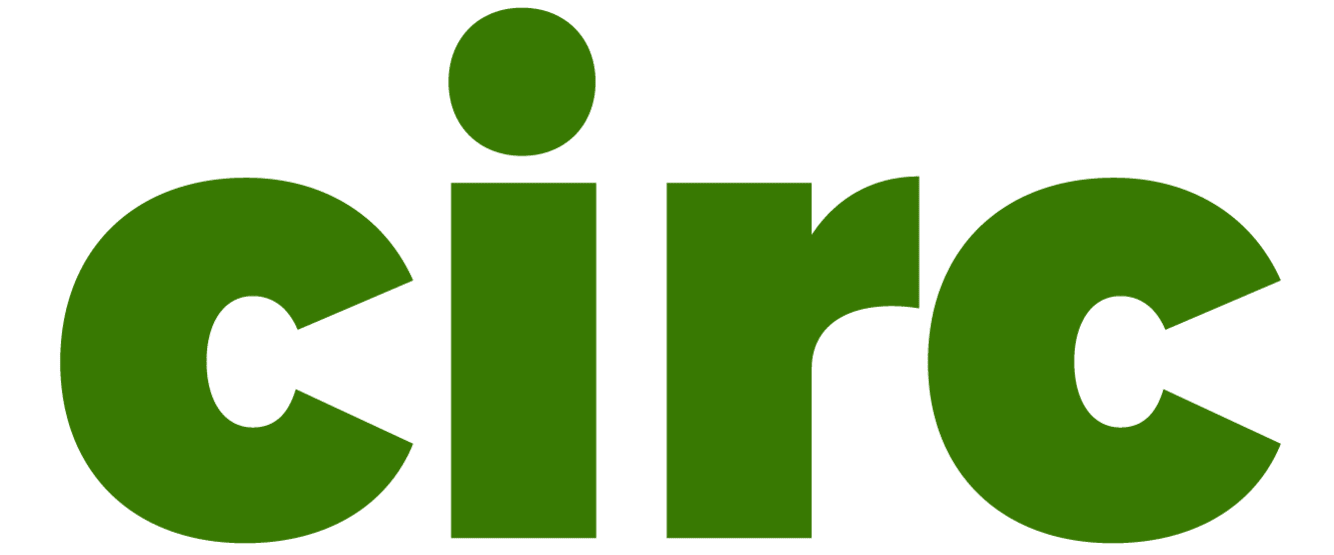On an idyllic spring morning in Grand Rapids, Michigan, partners and supporters gathered on the banks of what is now called Plaster Creek (Ken-O-Sha). Through a canopy of budding and flowering trees, dappled sunlight made this degraded urban stream sparkle. The soft hum of traffic from Madison Avenue, paired with morning birdsong, set a perfect soundtrack to talk about the intersection of nature and one of humankind’s more unsightly tendencies: littering.
The West Michigan Environmental Action Council (WMEAC) is the recipient of funding from the World Without Waste program, a national initiative which connected local organizations across the country with funding and technical assistance to tackle litter in their waterways. With guidance from the Osprey Initiative, an in-stream litter catchment device has been installed in Plaster Creek, a highly polluted tributary of the Grand River. This device, called a litter boom, will capture litter as it flows downstream toward the Grand River.
Jack Bates of Osprey Initiative gives a litter sorting demonstration. Photo by Hannah Mico.
Jack Bates and Yael Girard of the Osprey Initiative called for the small crowd’s attention to explain how a litter boom works and how this in-stream infrastructure also serves as a tool for education, research, and advocacy. “It’s one thing to catch and pull litter out of the creek, but it’s another thing to know how much litter, what kind of litter, old versus new litter…” said Yael, “this tells us where litter is coming from and what kind of solutions we can use to address litter before it enters the creek.” Jack demonstrated the process of classifying and analyzing litter that will be captured by the boom, taking special care to emphasize the importance of collecting consistent data. Osprey Initiative provides data collection sheets, technical advice, and maintenance support for local projects like the Plaster Creek litter boom.
Victoria Keenan, from Grand Rapids Parks and Recreation, raised an important question: “If we find specific kinds [of litter], what story does that tell us?” The litter we find in-stream must come from somewhere, and it travels across land to get there. Studying what is captured in the litter boom provides opportunities to track items back to their source: specific businesses, events, or gathering locations may produce high volumes of litter. Being able to target messaging and outreach to those sources might mean a reduction in, or elimination of, certain kinds of litter.
Jack and Yael shared a story from Minneapolis, Minnesota: 11% of the debris being captured in-stream was plastic bristles coming from the City’s street sweeper trucks. This data supported a transition to vacuum trucks, which eliminated this type of debris entirely.
When asked what kinds of advocacy or education goals might be supported by the Plaster Creek litter boom, local partners had a few ideas:
Carlos Calderon, WMEAC’s Director of Environmental Programs, is interested in single use plastic reduction. “We [the State of Michigan] still have the ‘ban against bans’ and this could create a long-term data set to reveal how many bags, foam containers, and plastic cups are ending up in the water supply.” The mentioned “ban on bans” is a 2016 state law that prohibits local governments from banning or imposing fees on plastic bags or other single-use containers.

Osprey Initiative’s Yael Girard (left) and WMEAC’s Carlos Calderon (right) with the litter gitter visible in the water behind them. Photo by Hannah Mico.
Katy Hoffman, the Executive Director of Garfield Park Neighborhoods Association, reflected on her own observations walking in the neighborhood: “There are a lot of pedestrians who use a nearby bus line and bring fast food waste into the neighborhood – we see it on the streets, in the Park, and elsewhere. Could this data help support trash receptacles along the walking corridors in our neighborhood?”
Andrea Lubberts, the Program Manager at Plaster Creek Stewards, expressed a desire for a plastic bottle count, which could support the expansion of Michigan’s bottle-return recycling program.
While partners dreamed up education and advocacy campaigns, Jack and Yael wrapped up the presentation by answering a few lingering questions:
❓Who is going to take litter out of the boom?
As the local coordinating partner, WMEAC will be coordinating volunteer opportunities to remove, sort, and record litter captured in the boom.
❓What happens to the boom in the winter?
Litter booms are relatively unaffected by ice, unless multiple inches of ice form in the Creek. If this is the case, the boom can be removed in late October, and put back in place in April.
❓What happens during a large flood / what if the water level rises too high?
Since it floats, the boom can be adjusted with the water level if it changes significantly. During large storms with lots of rainfall, the water level may exceed the level of the boom and litter will flow past it. The boom is designed and positioned to capture litter during “normal” flows.
❓How long will the litter boom be in the Creek?
Currently, there is project funding for one year of maintenance and litter monitoring.

The litter boom floats visibly in Plaster Creek. Photo by Hannah Mico.
After the ribbon was cut, and the event came to a close, a few white-tailed deer were spotted upstream: they waded through the Creek and crossed to the opposite bank. This quiet moment showed a glimpse of the healthy and restorative Plaster Creek could be, in a World Without Waste.
To support the continuation of the Plaster Creek litter boom, consider a donation to West Michigan Environmental Council.
For more information on aquatic litter prevention, check out River Network’s Waste in Our Waters toolkit.


